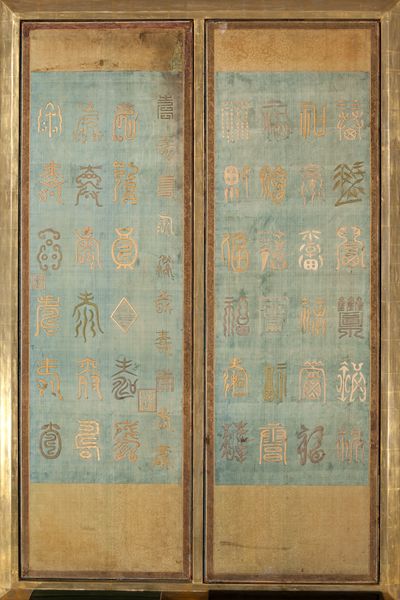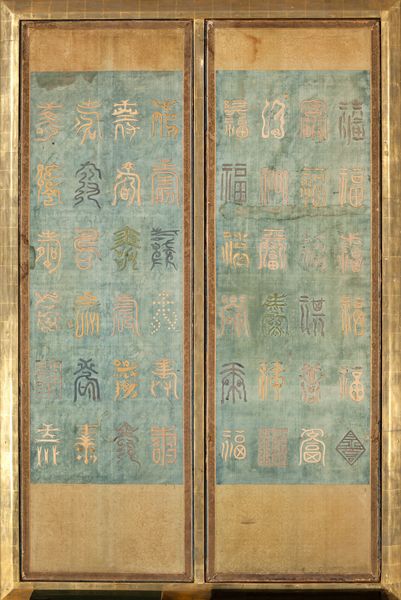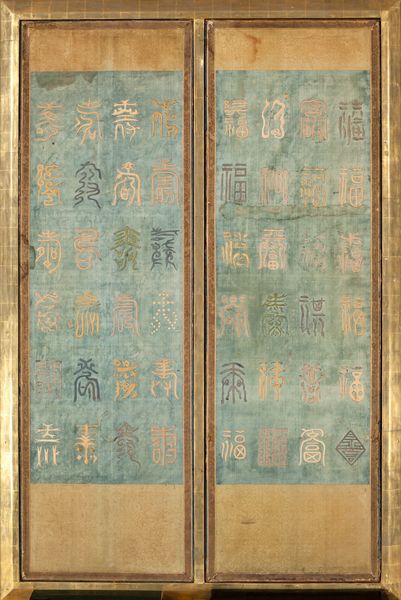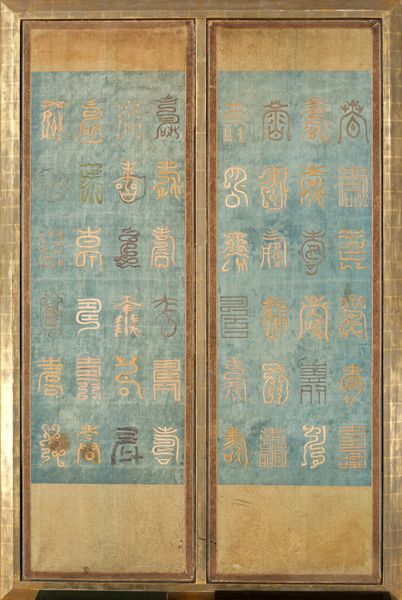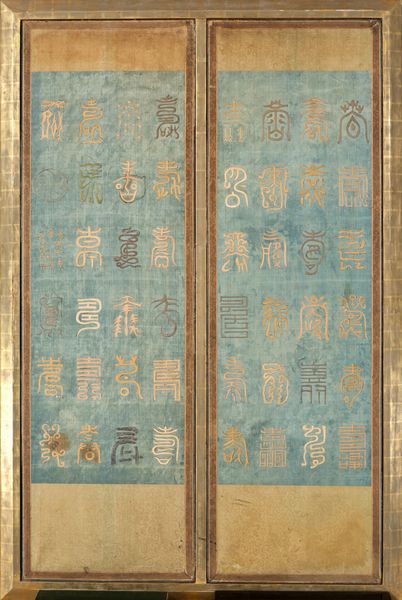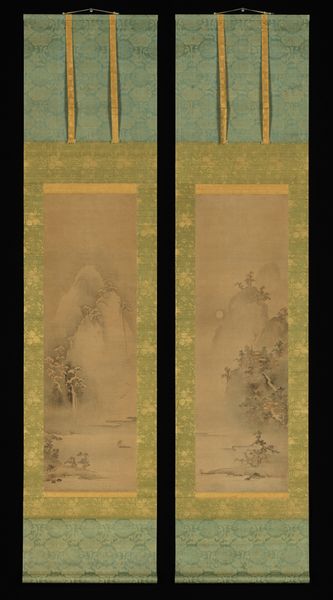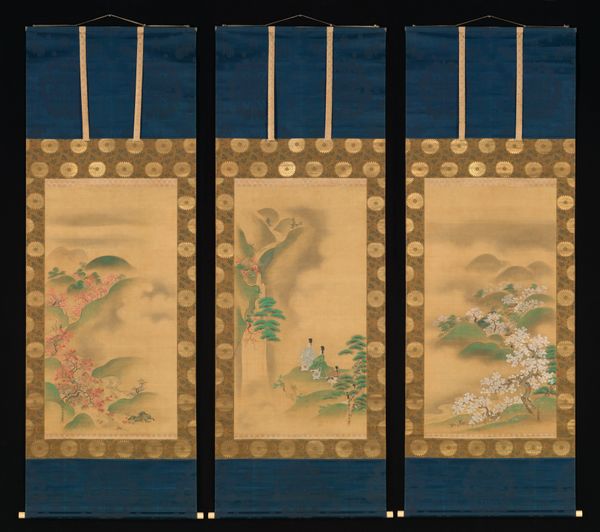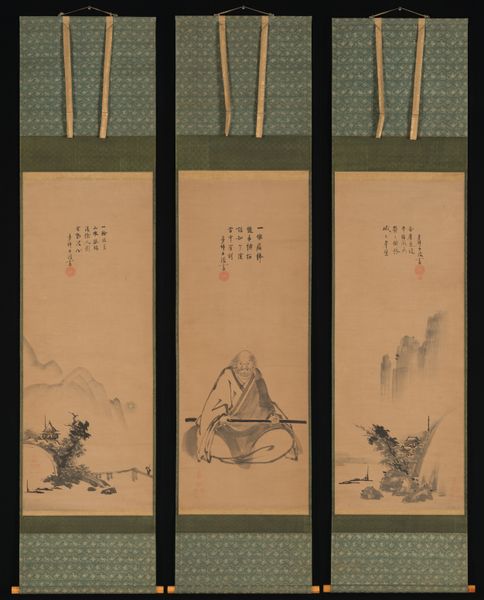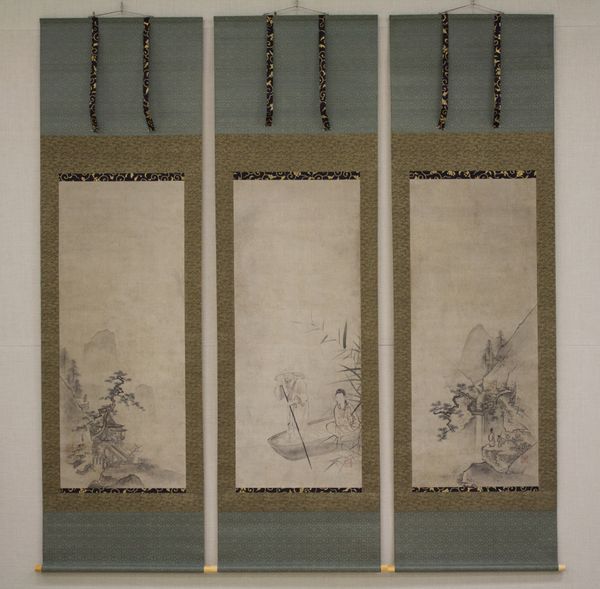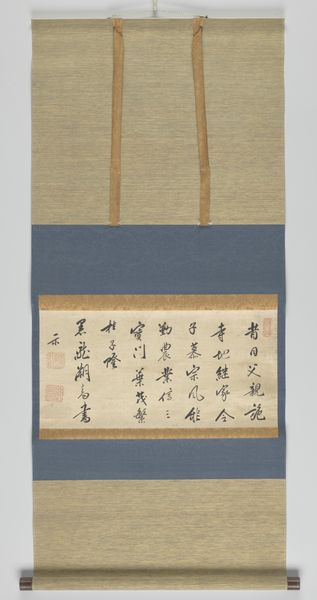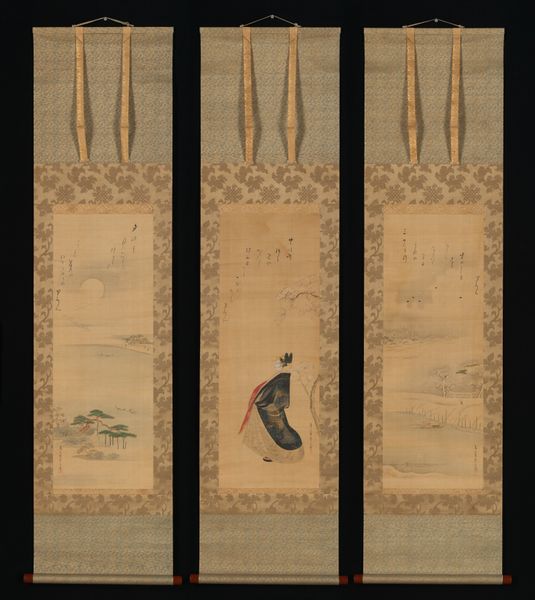
Embroidered Panels with Design of the Chinese Characters for “Longevity” and “Good Fortune” 18th-19th century
0:00
0:00
panel, textile
#
panel
#
water colours
#
asian-art
#
textile
#
geometric
#
orientalism
#
calligraphy
Dimensions: 34 1/16 × 12 5/8 in. (86.52 × 32.07 cm) (image)46 5/8 × 14 3/8 in. (118.43 × 36.51 cm) (mount)50 3/4 × 33 5/8 × 1 in. (128.91 × 85.41 × 2.54 cm) (outer frame)
Copyright: Public Domain
Curator: At first glance, the composition and contrasting colors – gold calligraphy against a blue-green textile—immediately strike me. Editor: We're looking at a pair of embroidered panels originating from 18th- or 19th-century China. The anonymous artist has designed these panels with calligraphy translating to "Longevity" and "Good Fortune.” They now reside at the Minneapolis Institute of Art. The medium itself, a textile panel, is significant. Curator: Absolutely. The choice of material—fabric as opposed to paper or wood—imbues the piece with a certain texture and depth, don't you think? Editor: It speaks to the context of its creation. Embroidery was traditionally the work of women and it was commissioned for the imperial court or wealthy families. The threads would have been meticulously dyed and woven. How the labor of producing this informs our understanding is vital, really. Curator: I agree that considering who likely created this is vital, however it is so aesthetically pleasing, that it transcends time, culture, etc. The symmetry between the panels is balanced perfectly, the intricacy is mind-blowing. Editor: Indeed. Calligraphy elevates the mundane. We need to remember, it also conveyed social status. Literacy, artistry – all interwoven, as literally as the threads here. Curator: This also leads to considering their functionality within elite households; for special events and celebratory occasions? What meaning the symbolism may have played? The colour combination gives an almost celebratory visual tone. Editor: Certainly the craftsmanship suggests careful planning for a particular market and occasion. Consumption patterns reveal societal values, hierarchies and status as evidenced by the nature and price of silk material, thread and workmanship. The embroidered medium offers more than aesthetics: it is both embedded and revealing in the larger society. Curator: Thinking on this, you do offer an entirely necessary consideration beyond just the aesthetic merit, that adds real contextual depth. Editor: I think unpacking its multiple meanings is essential; it has offered me more perspective about its origin and reception.
Comments
minneapolisinstituteofart almost 2 years ago
⋮
Each of these six panels features twenty-four Chinese characters, alternating between the characters for “longevity” (壽) and “good fortune” (福). The characters, embroidered in gold thread on a light-blue ground, represent a wide variety of scripts. Some are traditional, while others are less orthodox, including characters whose brushstrokes are formed by stylized bamboo, fish, or birds. These panels—probably from a set of eight or ten panels mounted individually or as a folding screen—would have been used as an auspicious backdrop for a sixtieth birthday celebration. The sixtieth year (called hwangap in Korean), marking one’s survival through a full sexagenary cycle (the twelve-pronged, sixty-year zodiac calendar), receives special commemoration in many cultures within the Chinese cultural sphere, even today.
Join the conversation
Join millions of artists and users on Artera today and experience the ultimate creative platform.
